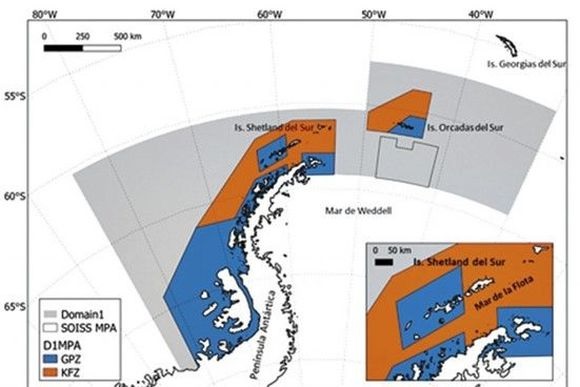Due to several land and sea border disputes, relations between Argentina and Chile have not always been smooth.
Now there is a chance for this rivalry to turn into a biodiversity milestone with the joint proposal to establish a marine protected area in the waters adjacent to the West Antarctic Peninsula and south of the Scotia Arc, a project that the Chilean Antarctic Institute and the Argentine Antarctic Institute have been working on since 2012.
In 2017, CCAMLR presented the project. Since 2002, the Commission for the Conservation of Antarctic Marine Living Resources has sought to develop a system of marine protected areas in Antarctica to conserve biodiversity and use resources in the area rationally and responsibly.

The new Marine Protected Area (MPA) covers an area of 148,000 square kilometers, protecting marine resources, conserving fisheries resources, and even commemorating the sunken submarine ARA San Juan crew, which was located in the area.
It is critical because much scientific research indicates that the Antarctic Peninsula is experiencing increased environmental variability due to global warming. It has led to thinning of the continental cap, calving icebergs, and instability.
The MPA in Antarctica covers a total area of 670,000 square kilometers in two zones: the general protection zone (blue on the map above), where krill, in particular, may not be caught, and the fishing zone (orange on the map above), where krill may be caught depending on the quotas of each country.
According to the Argentine Intergovernmental Panel on Climate Change, global warming is making the polar ice cap far more unstable, which could have disastrous consequences for the planet’s coastal areas at sea level and impact global water masses.
Cruise tourism and thinner ice are also causing ships to approach deeper, disrupting krill and the food chain. Krill are critical to carbon uptake and the biodiversity stream that bypasses the pole.
In addition, 75% of all Antarctic krill is found in the peninsula. “It is interesting that the Argentine and Chilean MPA initiative, which is a milestone in itself, is joined by the two other European-supported MPAs in East Antarctica and the Weddell Sea. Together, the three cover an area equivalent to the size of the European continent,” according to the Argentine Foreign Ministry’s Technical Service staff.
However, because CCAMLR decisions must be unanimous, the initiative continues to be blocked by China and Russia. China because of its vast fishing fleet and the need to feed its people, while Russia’s stance is a reaction to the current conflict with the West over the invasion of Ukraine.
With information from Latina Press

